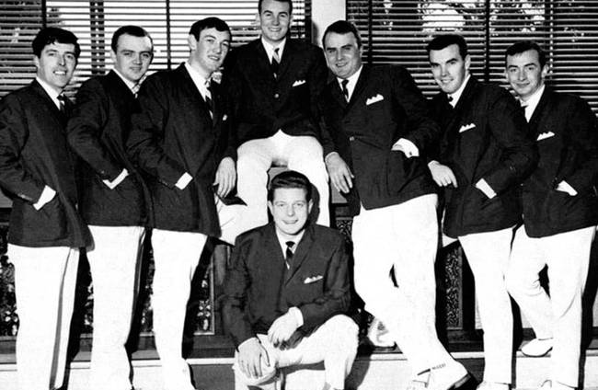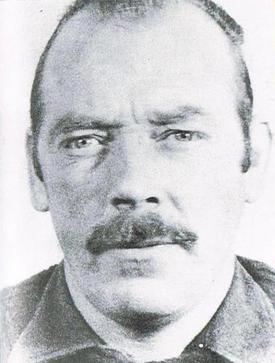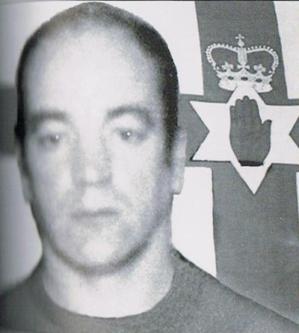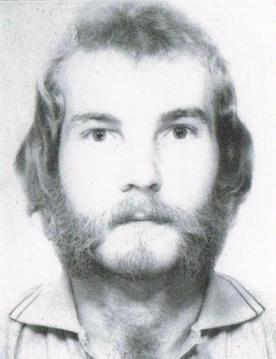
Meanwhile, the IRA continued their bombing of the UK, even carrying out a bombing of that bastion of British power, the Houses of Parliament. The bombing of four pubs, two each in Guildford and Birmingham resulted in the infamous kangaroo court which would end up convicting ten innocent men in two separate trials for the bombings. A month later, the IRA declared a ceasefire which lasted into 1975. This was about the worst and most ironic misnomer there could be, as 1975 turned out to be the bloodiest year of the Troubles to that point, with sectarian killings and bombings escalating and nobody paying a blind bit of notice to the ceasefire. According to the timeline I read though, the majority of the attacks were carried out by loyalist paramilitaries against Catholic targets, with the IRA too busy with in-fighting and feuding, killing each other and trying to assert their dominance.
By now, Harold Wilson desperately wanted to withdraw British troops from a conflict which seemed completely unwinnable (England’s Vietnam?), the soldiers themselves wanted to leave, fed up of being wounded and seeing their mates killed for a country they had no interest in, but there was stalemate, as if the troops were withdrawn the likelihood was that Ireland - perhaps all of Ireland but certainly Northern Ireland - would descend once again into bloody civil war. So he was forced to conclude that the troops must remain, as the IRA and the UVF fought it out, both in the six counties and in his own country as well as over the border in the Republic.
It is against this backdrop, and now that we have reached the appropriate place on the timeline, that our story begins.
Murdered Musicians: The Faces Behind the Massacre
Before we do though, it’s probably fair to say that the Miami Showband Massacre has gone down as something of a watershed moment in the Troubles and in Irish history, and marks one of the, unfortunately many, low points of the period. But it’s almost treated now as just the event, not fair to call it impersonal, but like the Birmingham pub bombings, the Omagh bombings or indeed the IRA Hunger Strikes, the faces behind the massacre are almost blank to us. Those of us who know about the atrocity know the guys were in a band, it was called the Miami Showband, and that they were Catholics from Dublin, but other than that, not much really. And nor do I. I’ve watched programmes on it and also unsuccessfully tried to find a book on it, but I couldn’t tell you who was in the Miami Showband, and I think it’s unfair to just categorise them as a “moment” in the Troubles without trying to find out who these young men were.

First then, a quick explanation. For those who are unaware, the band were not called the Miami Show Band, as in, they did a show as a band, or were from or pretending to be from Miami. A showband (one word) was something of a dreaded entity in Ireland, the kind of thing only we could come up with. Showbands, which evolved out of orchestras and big bands, basically played the hits of the day and yesteryear, dressed in suits and played dance halls and cabarets. They were, for most aspiring musicians, the only path to fame and a stepping-stone to getting their own band either formed or noticed. Rory Gallagher played in a showband, as did Van Morrison and most Irish musicians, because there really was no other route to the big time. Before his breakthrough with Thin Lizzy, Phil Lynott was heard to remark in frustration of the showband scene “How the **** do you get off this circuit?”
Few boys grew up with dreams of being in a showband (although I’m sure there were some for whom it was the career of choice) but everyone knew this was how you paid your dues. In an era long before even television chart shows and not much in the way of live band performances or agents, and with the record labels maintaining a stranglehold over contracts, and doling them out like a miser grudgingly giving a penny to a charity, bands had to prove themselves, show they were popular and could draw the crowds before they would be signed. Often, record executives and promoters would go to showband gigs to check out the talent and see if there was anyone worthy of being signed. With the rise of disco in the 1970s the popularity of showbands began to decrease, and the events of which we will now speak hastened that decline.
The band was formed in 1962 and went through two different singers before the last one. With their first gig to be in Dublin’s Portmarnock at the Palm Beach Hotel, the band chose the name Miami, due to the fact that Palm Beach is in Miami, and so became the Miami Showband. They went on to have six number one singles in Ireland, becoming one of the most popular and successful showbands in the country, and even represented Ireland in the Eurovision Song Contest in 1966. They were not unknown in Britain, having appeared on the highly popular
Sunday Night at the London Palladium variety show, and reports are that in Northern Ireland they were popular with both sides of the divide, earning the epithet “The Irish Beatles.”
At the time of the massacre, the band had changed members and so when they headed across the border on July 30 1975 the Miami Showband consisted of:
Fran O’Toole, vocalist and keyboard player; married with two children
Tony Geraghty, guitarist (?); not sure
Steve Travers, bass player; married
Des Lee, vocalist and saxophone player
Ray Millar, drummer; engaged
Brian McCoy, trumpet player; married, two children
(Note: Anyone whose marital status I haven't noted is someone I couldn't find out about)
The new line-up had been together barely a year when they played the
Castle Ballroom in Banbridge, Co. Down. Four of the band came from Northern Ireland, split equally along religious lines. Having played a gig earlier in the day in Galway, in the west of Ireland, the band headed across the border on July 30 to Co. Down, where they were rapturously received. At around 2 AM they loaded up the van for the journey home; drummer Ray Millar had decided to go see his parents in Antrim . This decision ended up saving his life.

Just short of the border at Newry, at a small town called Buskhill, the band’s van was flagged down by what appeared to be British Army soldiers, around 2:30 AM. Seeing nothing particularly unusual or worrying about this - checkpoints were a way of life during the Troubles, especially near the border - the boys stopped and, ordered out of the van, faced away while giving details of their names and addresses. Things seemed easy-going enough, as the men asked the band about their performance and bantered with them, but unbeknownst to the boys other armed men had arrived, melting out of the darkness. There were now about ten gunmen in total. A moment later a car arrived and a man in a British Army uniform, speaking in a crisp, cultured English accent got out. He swiftly began directing operations. The banter ceased and things got a lot more serious.
On realising though that the “soldiers” were interfering with their gear in the back of the van, one of the members, Des McAlea,* turned and asked if he could remove his saxophone, in case it got damaged. The gunmen agreed, but ran out of patience when Steve Travers also requested his bass guitar be moved, and they punched him in the back and sent him back into the lineup. Just then there was an almighty explosion.
And all Hell broke loose.
Two of the bombers had been killed in the explosion, blasted to ribbons, while the band members had all been blown into a nearby ditch. The gunmen began shooting - it doesn’t make it clear if there was any order to shoot or if they just began firing as a direct response to the unexpected explosion and the deaths of their comrades. Brian McCoy was the first shot, taking nine bullets in the back while Fran O’Toole was chased across the field and pumped full of machine-gun fire, mostly in his face, which all but destroyed his head entirely. I'm not disputing the account here, but I do wonder how you can be shot in the face while running away? I imagine either he turned to plead for his life and was shot, or it happened when he fell on the ground. Horrible way to die. Tony Geraghty was shot multiple times in the back.

Having been hit by the door of the van when it exploded and knocked into the long grass, Des McAlea remained there, unseen by the gunmen, playing dead. He would later hitch-hike into Newry to alert the RUC. Steve Travers also played dead, wounded with a dum-dum bullet in his leg. Dum-dum bullets are thick, designed to fragment once they enter the body, causing much more damage than the initial entry wound. The bullet that struck Travers exploded and collapsed one of his lungs, tearing through his intestines.
When McAlea later returned with the RUC, they found Travers badly wounded but alive. He was transported to hospital. The official opinion of the RUC was that the bomb had been intended to have been carried into the Republic, where it would explode, killing all band members and also “proving” that the Miami Showband had been carrying explosives for the IRA. This would weaken the Irish government’s stance on border crossings, embarrass Dublin and surely lead to tighter security at the border, making it harder for IRA attack squads to cross over into Ulster.
Specially-made glasses found at the scene were traced back to James McDowell, who is alleged to have been the one in charge, the one who ordered the shooting. Travers’ account of the British officer was not accepted by the RUC, most likely as he was one of their agents, as we will see. Fingerprints on a silencer found to fit the Luger pistol that had killed Brian McCoy, though proven to be those of Robin Jackson, said later to have been the architect of the killings, were dismissed as evidence by the trial judge, as it could not be proven that Jackson had not inadvertently touched the silencer on a different occasion.
The command of the UVF, of course, had a different version of events, and released a statement that tried to accomplish the image they had been attempting to create when their bomb had gone off prematurely. Their statement went thus:
A UVF patrol led by Major Boyle was suspicious of two vehicles, a minibus and a car parked near the border. Major Boyle ordered his patrol to apprehend the occupants for questioning. As they were being questioned, Major Boyle and Lieutenant Somerville began to search the minibus. As they began to enter the vehicle, a bomb was detonated and both men were killed outright. At the precise moment of the explosion, the patrol came under intense automatic fire from the occupants of the other vehicle. The patrol sergeant immediately ordered the patrol to shoot back. Using self-loading rifles and sub-machine guns, the patrol shot back, killing three of their attackers and wounding another. The patrol later recovered two Armalite rifles and a pistol. The UVF maintains regular border patrols due to the continued activity of the Provisional IRA. The Mid-Ulster Battalion has been assisting the South Down-South Armagh units since the IRA Forkhill boobytrap which killed four British soldiers. Three UVF members are being treated for gunshot wounds after last night but not in hospital.
The statement also said:
It would appear that the UVF patrol surprised members of a terrorist organisation transferring weapons to the Miami Showband minibus and that an explosive device of some description was being carried by the Showband for an unlawful purpose. It is obvious, therefore, that the UVF patrol was justified in taking the action it did and that the killing of the three Showband members should be regarded as justifiable homicide. The Officers and Agents of the Ulster Central Intelligence Agency commend the UVF on their actions and tender their deepest sympathy to the relatives of the two Officers who died while attempting to remove the bomb from the minibus.
As you might expect, the Miami Showband killing brought retaliation from the IRA, who attacked a pub on the Shankill Road two weeks later, and killed a local DJ who was known to have been a friend of Harris Boyle, one of the UVF gunmen, and said to have been linked with one of the British soldiers. A minibus was also attacked, though nobody can say for certain whether this was the UVF or the IRA; there is a belief the latter mistook it for a police bus, though it was actually carrying pensioners back from bingo. Five out of the nine passengers - all Catholic - were killed.
Arrested for the Miami Showband murders were Lance-Corporal Thomas Crozier and Sergeant James McDowell, both UDR (Ulster Defence Regiment, another loyalist paramilitary group) members, and John Somerville (brother of Wesley), a former UDR man, who received four consecutive life sentences, the other two receiving life sentences.* both of whom were released under the terms of the Belfast Agreement, having served twelve years in the case of Crozier and McDowell and a mere seven in the case of Somerville.
A report issued in 2011 by the Historical Enquiries Team drew a clear link between the UVF, the British Military and an RUC Special Agent named Robin Jackson, believed by many to be the mastermind behind the attack. He was however never charged and died of cancer in 1998.It dismissed entirely the claim that the Miami Showband were working with the IRA to bring bombs across the border. Sentencing the original two perpetrators at the time, and handing down what was the longest and stiffest sentence in Northern Ireland’s history, the judge noted that if the death penalty still applied he would have sentenced both men to death for their heinous crime. To date, none of the surviving members of the Miami Showband have ever received any apology from anyone connected with the UVF or the loyalist hierarchy.
Before we go further though, let’s look at the other side of the equation, the men who were involved, or believed to have been involved, in the massacre.













 Linear Mode
Linear Mode
